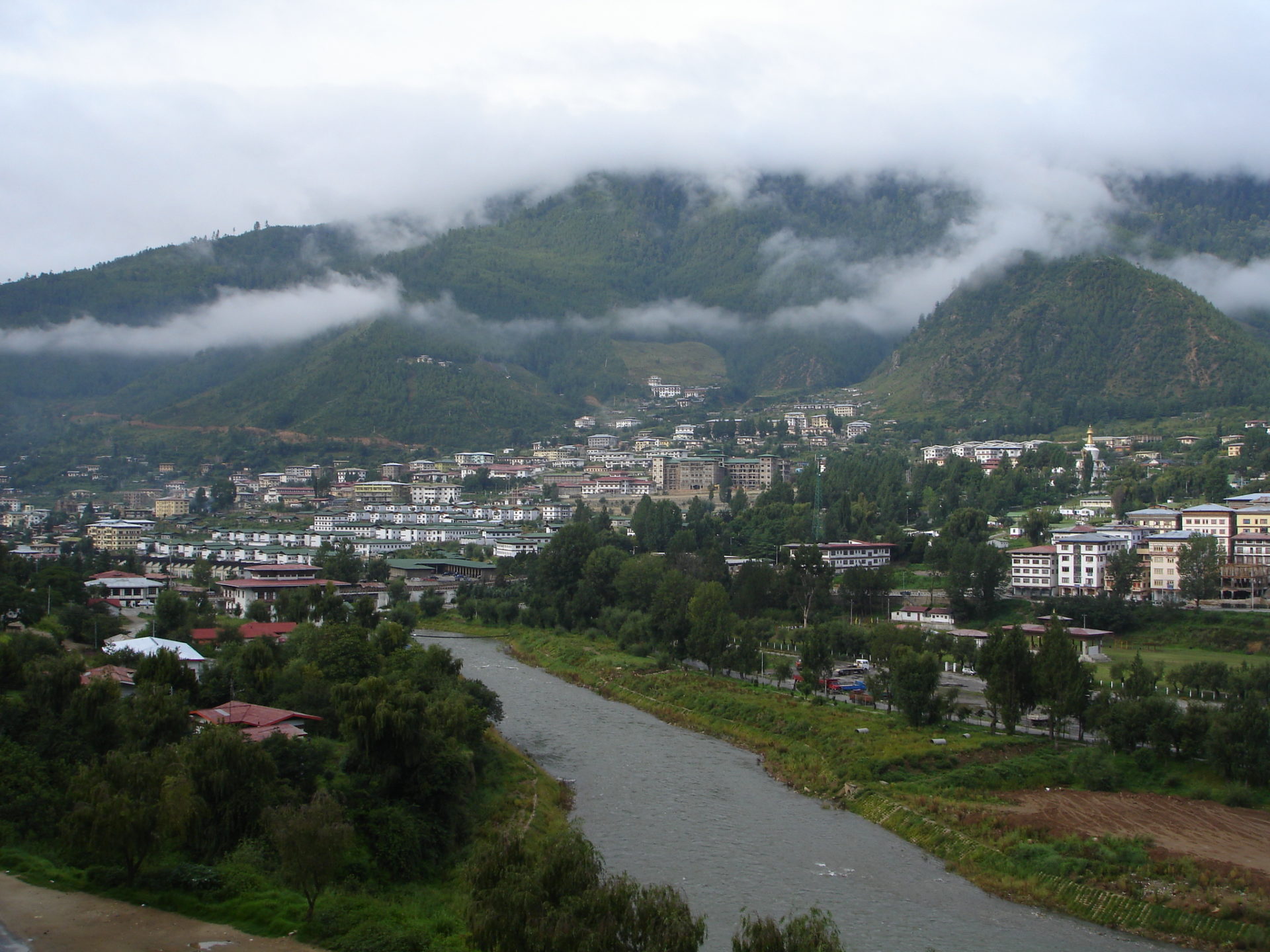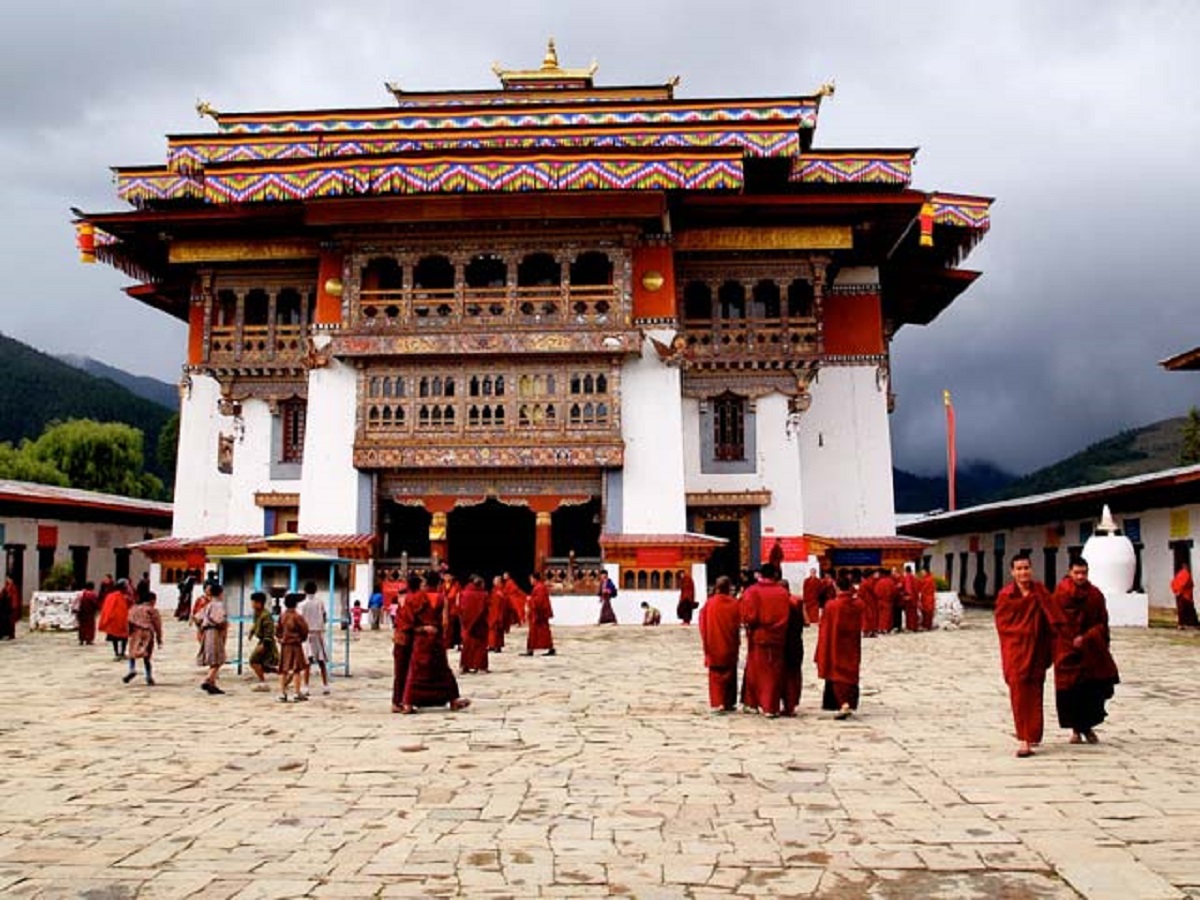PARO

Places to visit in Paro:
- Kyichu Lhakhang [Lhakhang means Temple]
- Taktsang Lhakhang [Tiger’s Nest]
- Drugyel Dzong [Dzong means Fortress]
- Dungtse Lhakhang
- Ta Dzong [National Museum]
- Rinpung Dzong
About Paro
With the parity of air and the absence of noise, Paro has kept itself a rich culture, scenic beauty and hundred of myths and legends. Home to many Bhutan’s oldest temples and monasteries, National Museum and country’s only airport. Mount. Chomolhari (7,314m) reigns in white glory at the northern end of the valley and its glacial water plunge through deep gorges to form Pa Chhu (Paro river). Paro is also one of the most fertile valley in the Kingdom producing a bulk of the locally famous red rice from its terraced fields.
THIMPHU

Places to visit in Thimphu:
- The Memorial Chorten
- Buddha Point (Kuensel Phodrang)
- Weekly Market [Saturdays and Sundays]
- Tashichoe Dzong [The biggest fortress in Bhutan]
- National Library
- School of Arts and Crafts
- Royal Academy of Performing Arts
- National Institute of Traditional Medicine
- Zangto Pelri Lhakhang
- Zoo
- Changangkha Lhakhang
- Drubthob Goemba [Nunnery]
- Dechencholing Palace
- Pangri Zampa Temple
- Tango Goemba
- Chari Goemba
- Simthoka Dzong
About Thimphu
Thimphu situated on the West Bank of the Thimphu Chhu (Chhu means River), unlike any other world capital, small and secluded the city is quiet and there are never the traffic jams. It is often said that Thimphu is the only world capital without traffic lights.
Thimphu’s main shopping street is a delight for beautiful weaves in wool, silk and cotton, basketwork, silver jewellery, Thangkas and other traditional crafts of the Kingdom are available in various Handicraft Emporiums.
Meanwhile, enjoy the picturesqueness of the architecture and national costume.
PUNAKHA

Places to visit in Punaka:
- Chimi Lhakhang
- Khamsum Yulley Namgyal Chorten
- Sangchhen Dorji Lhuendrup Lhakhang Nunnery
- Limbukha
- Talo
- Punakha Ritsha Village
- Nalanda Buddhist College
About Punakha
Punakha served as the capital of Bhutan until 1955 and still it is the winter seat of Je Khenpo (the chief abbot). Blessed with temperate climate and owing to its natural drainage from Pho Chhu (male) and Mo Chhu (female) rivers, the Punakha valley produces abundant crops and fruits. There are splendid views of the distant Himalayas at Dochula pas (alt. 3,050m) on Thimphu – Punakha road.
Wangdue Phodrang is located south of Punakha.
Wangdue Phodrang Dzong is perched on a spur at the confluence of Punakha Chhu and Tang Chhu rivers. The position of the Dzong is remarkable as it completely covers the spur and commands an impressive view over both the north-south and east-west roads. The main road climbs the length of the spur and on the left, across the river, comes the first glimpse of the picturesque village of Rinchengang whose inhabitants are celebrated stonemasons.
BUMTHANG

Places to visit in Bhumthang:
- Jakar Dzong [Castle of the White Bird]
- Wangdichholing Palace
- Lamey Goemba
- Kurje Lhakhang [Ku means “body”, Je means”imprint”]
- Tamshing Lhakhang [Temple of Good Message]
- Kencho Sum Lhakhang [known for its broken bell]
- Member Tsho
- Peling Sermon Chorten [Stupa]
About Bumthang
The Bumthang region has four major valleys : Choskhor, Tang, Ura and Chhume. The Dzongs and the most important temples are in the large Choskhor valley, commonly referred to as Bumthang valley. There are two versions of the origin of the name Bumthang. The valley is supposed to be shaped like a Bumpa, a vessel that contains holy water, and Thang meaning flat place. The religious name suggestion to the sacred character of the region that have many important temples and monasteries in such a small area in Bhutan.
TRONGSA

Places to visit in Trongsa:
- Trongsa Dzong
- Chendebji Chorten [Stupa]
- Ta Dzong
About Trongsa
Trongsa means ‘the new village’ and the founding of Trongsa first dates from the 16th century which is indeed relatively recent for Bhutan. It was the Drukpa lama, Ngagi Wangchuk (1517-54), the great grandfather of Shabdrung Nawang Namgyel, who founded the first temple at Trongsa in 1543. The landscape around Trongsa is spectacular, and for miles on the end the Dzong seems to tease you so that you wonder if you will ever reach Trongsa. The view extends for many kilometres and in the former times, nothing could escape the vigilance of its watchmen.
GANGTEY & PHOBJIKHA

Places to visit in Gangtey & Phobjikha Valley
- Gangtey Goempa
- Black Necked Crane Information Centre
About Gangtey & Phobjikha
The valley of Gangtey is one of the most beautiful spots in Bhutan. The surprise of finding such a wide, flat valley without any trees after the hard climb through dense forests is augmented by an impression of vast space, and extremely rare experience in Bhutan where most of the valley’s are tightly enclosed.
A few kilometers beyond the Gangtey Monastery, on the valley floor lies the village of Phobjikha. This place is the winter home of black necked cranes that migrate from the arid plains in the north to pass winter in milder and lower climate. Phobjikha, at an altitude of 2900 m, falls under the district of Wangduephodrang and lies on the periphery of the Black Mountain National Park. The valley boasts two beautiful meandering rivers, Nakay Chhu (Chhu Naap-black water) and Gay Chhu (Chhu Karp-white water).
According to a local legend, the two rivers actually represent a snake and a boar. The two animals once raced each other with an agreement that if the snake (Nakay Chhu) won, Phobjikha valley would be able to grow rice, but if the boar won, then rice could never be cultivated in the area. The snake lost since it had to meander all the way during its journey. Rice cannot be cultivated in the valley even today.
TRASHIGANG

Places to visit in Trashigang:
- Zangtho Pelri Kanglung Lhakhang
- Khaling Lhakhang
- Radhi Lhakhang
- Trashigang Dzong
- Tashiyangtse Dzong
- Gom Kora
- Chorten Kora
About Trashigang
In the far east of Bhutan, on the bank of Gamri Chhu river lies Trashigang, the country’s largest district. Trashigang, once the centre of a busy trade route with Tibet, is today the junction of east-west highway with road connecting to Samdrup Jongkhar and then to the Indian States of Assam. This town is also used as the market place for the semi nomadic people from Merak and Sakteng whose costumes are unique in Bhutan. After Thimphu, Trashigang is the biggest urban center in mountainous Bhutan. There are several goembas and villages that make a visit worthwhile, but it is a remote region and requires a lot of driving to reach.
